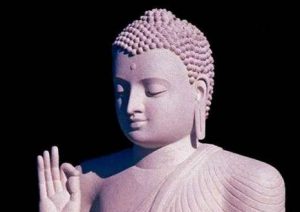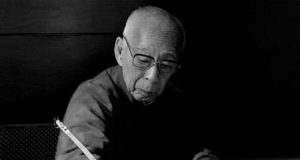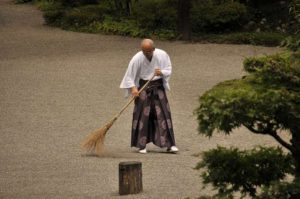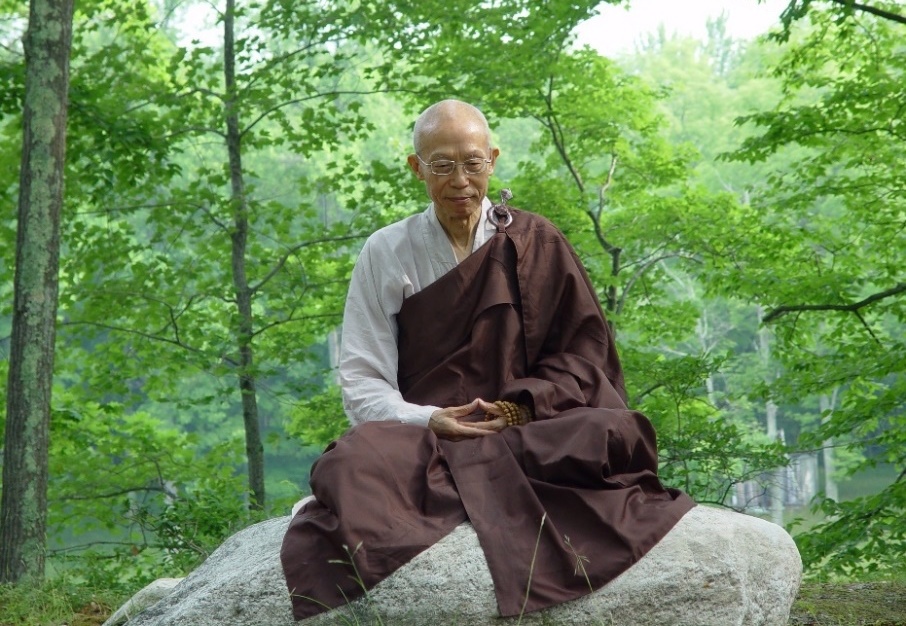
By the early 20th century, Chan Buddhism had declined and diminished in China. As the Dharma heir of both the Caodong and Lingji lineages, Master Sheng Yen (1930–2009) felt the need to “inherit the past and inspire the future,” and he incorporated this mission throughout his process of teaching Huatou (話頭, Lingji school) and Silent Illumination (默照, Caodong school) contemplation, and in molding the Chan style of the Dharma Drum Mountain Buddhist organization. In his book The Dharma Drum Lineage of Chan Buddhism, (2011, 16–17) Master Sheng Yen explains how studying the Theravada and Vajrayana traditions, as well as Chan Buddhism in Japan, Korea, and Vietnam, and his experiences leading meditation retreats in Europe and the US, helped to shape his own Chan teachings, which he hoped could simultaneously reconnect with its original essence in the Buddhadharma, while also meeting the needs of contemporary society. He worked continuously to achieve this vision, devising innovative methodologies for teaching and communicating Chan.
Characteristics of Master Sheng Yen’s Chan teaching
Two of the main Chan contemplative methods Master Sheng Yen focused on were Huatou and Silent Illumination. While both are generally considered “sudden” paths, Master Sheng Yen taught them in a sequential manner. First, he modified the “gradual” vipaśyanā (Pali: vipassana) methods of the Theravada tradition and applied them in the Chinese Chan context. He further systematized the Chan practices of Huatou and Silent Illumination, devising a “gradual” approach within the “sudden” path of Chan practice, creating effective and practical methods for practitioners of different spiritual capacities.
More specifically, Master Sheng Yen mapped out four general stages in Chan practice: from scattered mind, to concentrated mind, to unified mind, to no-mind or enlightenment. He also devised auxiliary methods that are useful at every stage along this path, all of which are the results of his many years of study, organization, and practice—all in the pursuit of revitalizing the Chan tradition of Chinese Buddhism. (Master Sheng Yen 2011, 18)

1. A “gradual” approach to the “sudden’ method of Huatou
Master Xuyun (1840–1959) defined Huatou as: “What it is that came before this present sentence/word?” In other words, the purpose of investigating Huatou is to find out what existed before language and words. Some commonly used Huatou are: “What is wu?”* “Who am I?” “Who is it that’s dragging this corpse around?” “What was my original face before I was born?” The key to investigating Huatou is not to explain the Huatou itself and not to give it any meaning through logical or analytical thinking.
While practicing Huatou, no matter what happens to one’s body and mind, one should only pick up the Huatou and ask. For example, when wandering thoughts, illusory thinking, afflictions, internal conflicts, physical discomfort, or even pleasant experiences arise, one should ignore them and continue to focus on the Huatou. In other words, practitioners use Huatou to remove all attachments, both positive and negative.
In his book Shattering the Great Doubts, Master Sheng Yen introduced three stages of Huatou practice:
• Stage one is to recite the Huatou. Simply by repeating the same Huatou over and over, one can begin to gather and focus one’s scattered and wandering mind.
• The second stage is to ask the Huatou. When one can concentrate on the Huatou and begin to generate interest in wanting to know “the answer,” one is able to constantly and steadily ask the Huatou. When the “doubt sensation” (疑情) is generated, one may progress from “concentrated mind” and enter “unified mind.”
• The third stage is to investigate the Huatou. With the prerequisite “doubt sensation” and unified mind in place, one can truly investigate the Huatou and generate deeper and great doubts. Then, when the causes and conditions are ripe, one may be able to shatter the great doubts and attain enlightenment.
The focal point of the Huatou practice is to generate the “doubt sensation.” There is a saying: “Great doubt, great enlightenment; small doubt, small enlightenment; no doubt, no enlightenment,” which illustrates that the depth of any realization corresponds to the intensity of one’s doubt. (Master Sheng Yen 2009, 12–15)
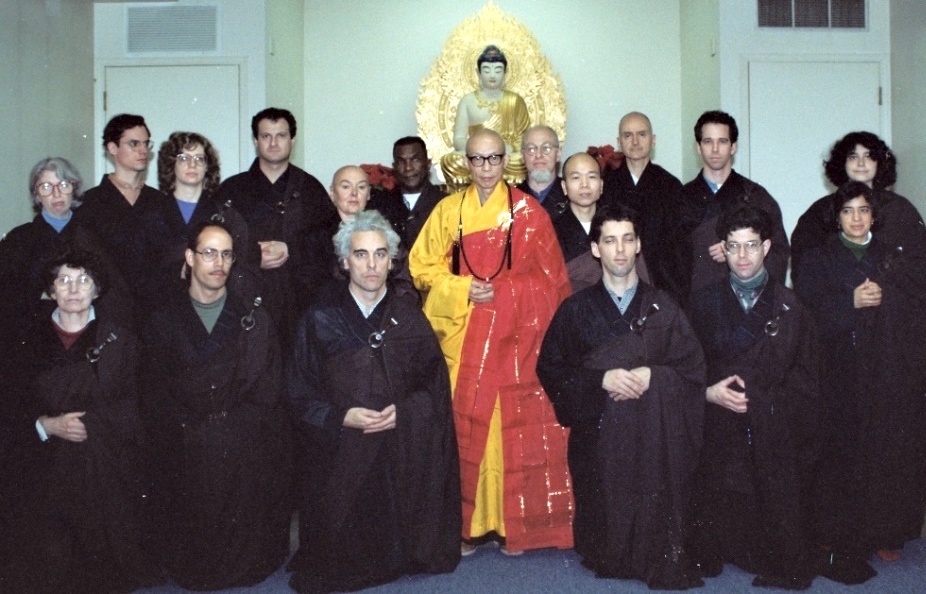
2. A “gradual” approach to the “sudden” method of Silent Illumination
The method of Silent Illumination is the simplest, yet also the most elusive for many. This method does not require the practitioner to follow any particular order, yet it encompasses all the benefits of a sequential practice. One only has to adhere to the principle of not adding any attachment, neither engaging in wandering thoughts nor analytical thinking. The present moment is exactly what it is. By practicing in this manner, one will naturally recalibrate to correspond with the “original face.” Letting go of self-attachment is the so-called “silent,” aspect, being lucid is the “illumination.”
In his book The method of No Method, Master Sheng Yen introduces three stages of Silent Illumination practice (2008, 17–24) to make this method clearer for practitioners:
• Stage one is just sitting in complete relaxation and being aware of the total body sensation. One begins the practice by completely relaxing the body, either through breath contemplation or by sitting with total body awareness. It is possible to achieve the unification of body and mind at this stage.
• The second stage is experiencing the environment as one with oneself—you are the environment and the environment is you. After the body and mind are unified, if one further maintains clear awareness of the environment, the mind and the environment will naturally unify. The boundaries of the body disappear, yet the clear awareness of the environment remains. The mind is clear, aware of everything, and utterly still.
• The third stage of Silent Illumination is the experience of boundless spaciousness. One experiences both the internal and the environment as vast, open, and clear, leaving behind discrimination yet knowing the outside very clearly. “In true Silent Illumination, the environment exists, but we are not influenced, defiled, or conditioned by it in any way; we are no longer swayed by discriminating thoughts.”
When your mind becomes clear and bright and there is no clinging to either self or no-self. This is true Silent Illumination. However, it is possible to contemplate emptiness and selflessness at any stage in Silent Illumination; it is also possible to experience enlightenment at any stage of this practice. It is not necessary to progress stage by stage.
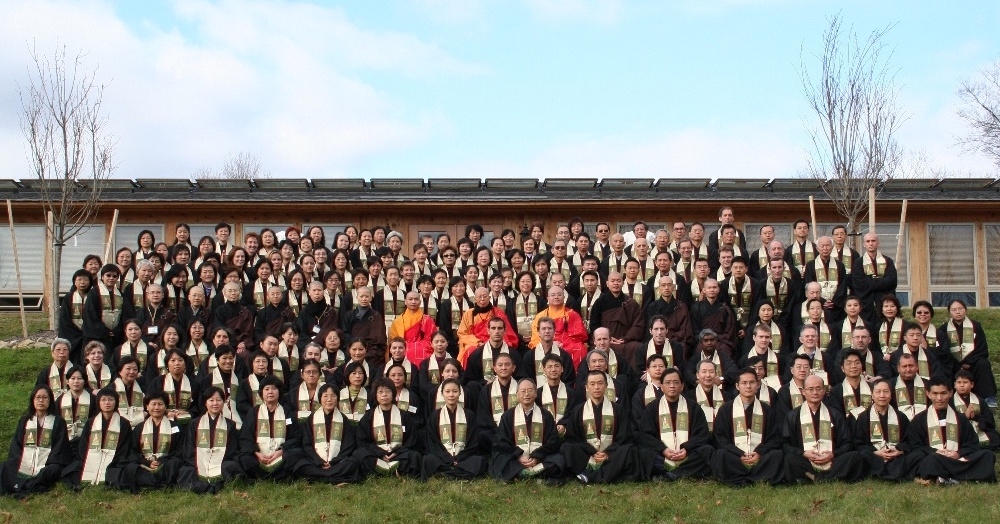
Integrating Chan with the Bodhisattva practices
Master Sheng Yen often said, “Reaching the state of unified mind is a technical issue. [On the other hand,] reaching enlightenment is a matter of the fulfillment of merits and virtues, and the ripening of cause and condition.”
For this reason, Master Sheng Yen often reminded practitioners following his teachings of the importance of renunciation and generating Bodhi Mind. He strongly emphasized the need to give rise to the Bodhi Mind and to walk the Bodhisattva Path so that one can cultivate merits and virtues. He himself studied the Vinaya extensively to simplify the Bodhisattva Precepts. (Master Sheng Yen 1995, 153–4) He wanted to make the precepts accessible to contemporary society while still adhering to their original precepts. As a result of his efforts, Master Sheng Yen transmitted the Bodhisattva Precepts for the first time in New York in 1990.
Master Sheng Yen made an analogy about upholding the Bodhisattva Precepts and generating the Bodhi Mind, describing it as akin to striking a lighter: One must strike the lighter in order to bring light to others in the dark. If we keep striking the lighter (to bring light to others), time after time, then one day, when the light reflects back, we ourselves will see what the lighter looks like. Fire is an analogy for the function of compassion and wisdom, which gives people light. The lighter is our “true nature.” Through this analogy, Master Sheng Yen encouraged all Chan practitioners to bring forth their Bodhi Mind.
* Wu (無) can be translated as meaning “not have,” “without,” or, “nothingness”.
Venerable Guo-Xing was recently assigned to be the vice abbot of Dharma Drum Mountain in Taiwan and the managing director of the Dharma Drum Mountain Chan Practice Center. Venerable Chang-Hwa is the director of the Chan Meditation Center, New York. The authors would like to acknowledge the invaluable translation and editing work for this article by Yayun Anny Sung.References Master Sheng Yen. 2011. The Dharma Drum Lineage of Chan Buddhism. Taipei: Sheng Yen Education Foundation.
———. 2009. Shattering the Great Doubts. Boston, MA: Shambhala.
———. 2008. The Method of No Method. Boston, MA: Shambhala.
———. 1995. Pu Sa Jie Zhi Yao (菩薩戒指要). Taipei: Fagu wenhua. The Boddhisattva Precepts-Directions to Buddhahood. 2005. Taipei: Sheng Yen Education Foundation.
Related
Approaching Chan, Part 1
Approaching Chan, Part 2: The Two Streams of Chan Contemplative Practices







